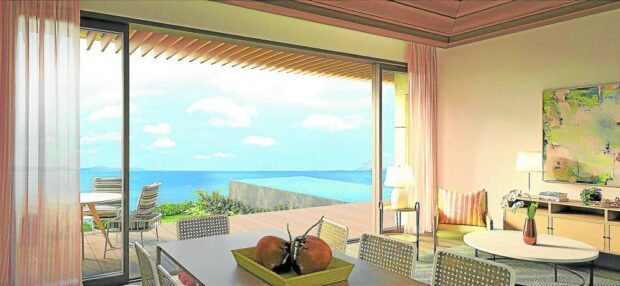Air rights, open spaces and real estate valuation

Residences, restaurants and resorts that afford “overlooking views” attract visitors, buyers and investors. Elevation, openness and green elements undoubtedly add value to a property. And because of this, premium is given to these features that figure in pricing and marketing strategies.
Architecture and open spaces
The built form is ideally shaped by its environment and so architecture is supposed to embody the conversation between the site and building.
The Philippines, being a tropical country, has given form to vernacular architecture that is interwoven with nature. The traditional bahay kubo is typified by raised floors on stilts and the balcony that serves as the middle space connecting the public and private spaces. The bahay na bato has the same semi-public spaces in the form of the veranda and azotea.
Such interactions with the site settings have been carried over to modern buildings and developments such as condominiums that feature balconies and full height windows. Shopping malls are designed around spacious atria and hallways that were once regarded as non-revenue generating areas.
Article continues after this advertisementMore recently, we have seen innovations in site interpretations that gave form to cantilevered and suspended spaces. Green roofs are becoming more and more in vogue as congestion in urban areas sets in.
Article continues after this advertisementSite development
The value of open spaces manifests in development typologies that include cul-de-sac layouts, central location of the clubhouse and playground site, and the main street-oriented development. Pricing schemes reflect the preference for beachfront sites with sunset views, golf course residential estates, and resort-type condominium communities.
Building forms reconfiguring from large masses to clusters of small structures organized around landscaped areas also reflect the acknowledgement of the value-adding features of open spaces. Light, ventilation, and access to nice views are prioritized over maximization of saleable spaces.
Property values
Environmental qualities factor significantly in the valuation and saleability of properties.
Real estate product packaging has a lot to do with how interior spaces interface with the outdoors. Sites, being three-dimensional spaces, are defined not only by their location on the ground but also by where they are in the air space. Upper floors in hotels and residential condominiums command higher prices because of the views they afford. The value of openness is indicated by the higher prices of corner lots or corner units. Lots along or near the main spines of estate development are also priced higher than those in the outer rings.
Private-public space overlapping
Referred to as common areas or the public realm are the inalienable spaces that are supposed to be shared and enjoyed by everyone, free of charge. But the increasing lack of open spaces in highly urbanized areas has led to the emergence of hybrid spaces where privately owned land may be developed for public use or vice-versa. Building over public roads or privately owned land is enabled by laws covering air rights and air spaces.
Regulating open spaces, air space development
The National Building Code of the Philippines provides for light and ventilation, easements and setbacks, and open space ratios. It also refers to view corridors and lines of sight. The Billboard Regulation Act of 2010 is hinged on the definition of air rights and use of air spaces.
Municipal and city zoning ordinances regulate building heights and densities through development controls such as floor-area ratio. Republic Act No. 4726 or the Condominium Act provides for exclusive easements for the use of air space. BP 344 or the Accessibility Law has stipulations for access to open spaces in cases of emergency. The Water Code, Forestry Code and NIPA Law provide for the protection of the natural assets.
Equity in access
All the preferred nature-oriented site and building features have price tags that not everyone can afford. The more exclusive the development, the higher the price they command. This marketing principle manifests in gated development and club membership facilities.
But nature constitutes the public realm that should be accessible to all. The prescriptive nature of regulations works to curb market forces that limit access to those who can pay to enjoy views and fresh air. To complement regulations, design processes leading to more public-sensitive settings may also be incentivized. Building designs that are transparent and disaggregated allow for visual and physical permeability that do not divide the urban spaces into exclusive compartments.
Designers and developers need to be constantly reminded that air and water spaces are shared amenities that should be enjoyed by all.
The author is a Professor at the University of the Philippines College of Architecture, an architect and urban planner

